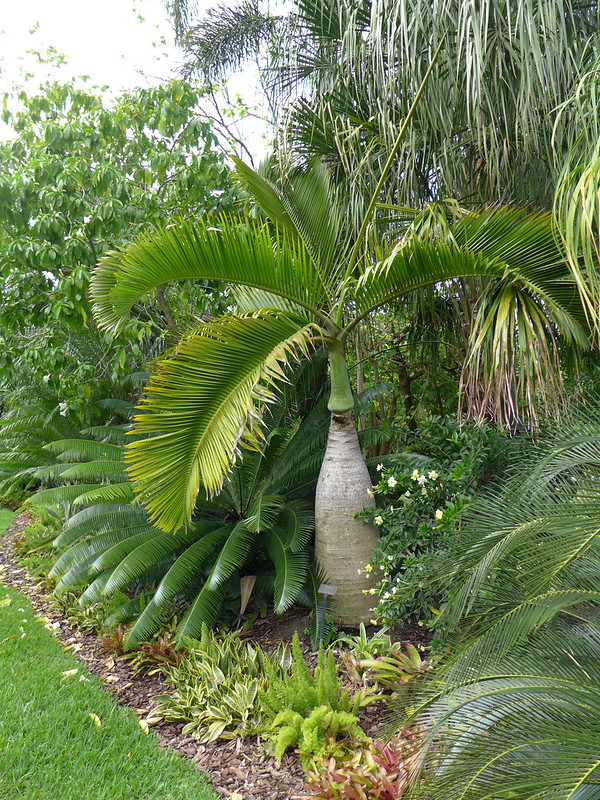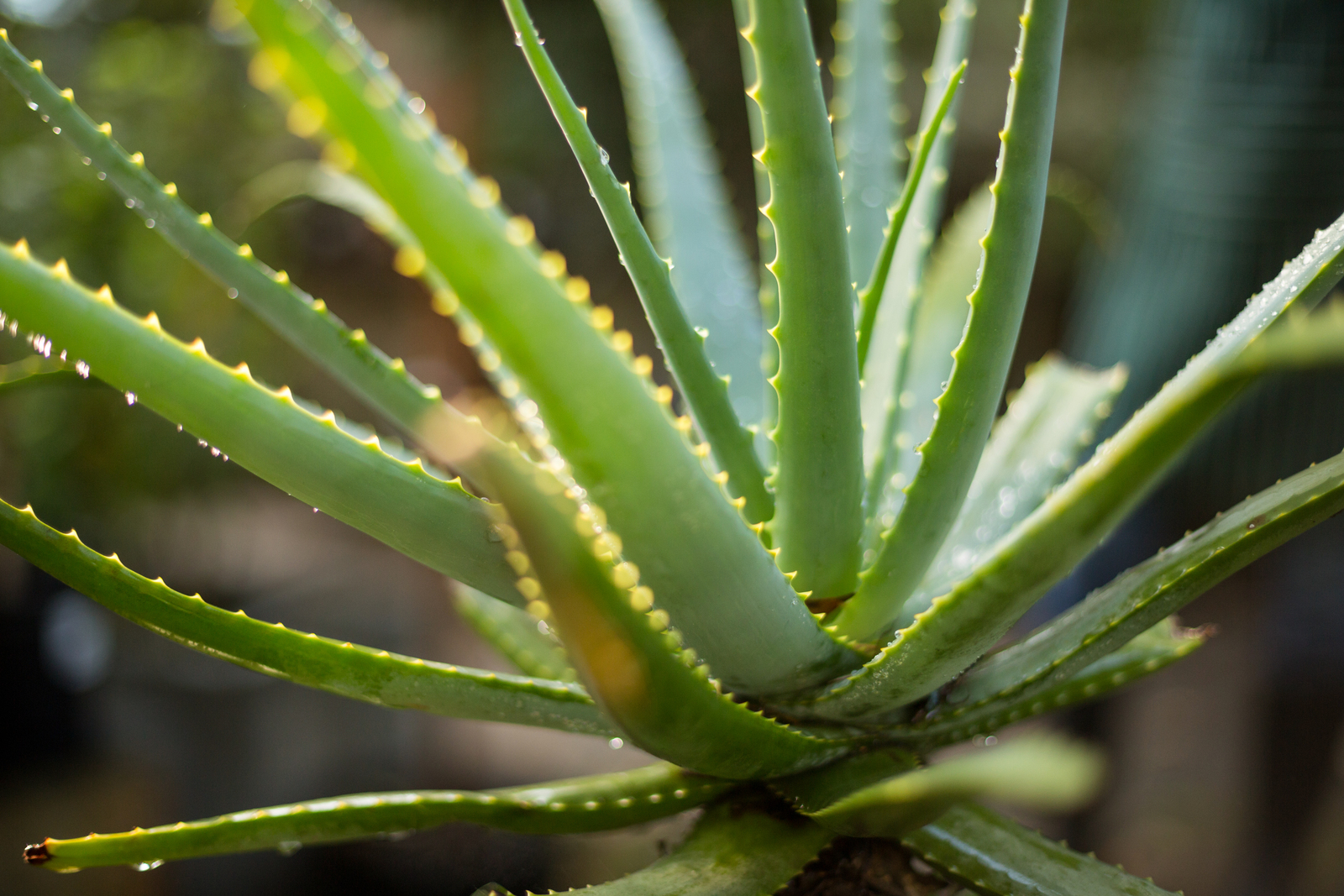Bottle Palm Tree: Bottle Shaped Trunk
Bottle Palm trees (Hyophorbe lagenicaulis) are native to the Mascarene Islands, and are known for their bottle-shaped trunks as well as their upward arching fronds. These palm trees are popular in commercial and residential settings.
Bottle palms add tropical flair when planted as a focal point or accent in the landscape.

Bottle Palm (Hyophorbe lagenicaulis). Photo by Scott Zona, Flickr
Hyophorbe lagenicaulis (also known as Bottle Palm) belongs to the Arecaceae family, and can be planted year round in USDA hardiness zones 10 through 11. The Bottle Palm tree is considered to be a dwarf palm tree – perfect as a large container palm or planted in small gardens and landscapes.
Bottle Palms can grow up to twenty feet tall; however, average height is typically ten feet. Arching palm fronds fan out from a bottle shaped trunk to form a v-shaped spray.
The upward arching fronds are bright green in color, with a leaf blade length of twenty-four inches. These palm trees are planted outdoors as accents or focal points in the landscape.

Bottle Palm Tree Care
Bottle palm trees add unique tropical appeal to residential and commercial landscape designs. Single specimens are typically used as a focal points or accents in the landscape. Several trees can be planted in a row to form a barrier or section off areas in the landscape.
Tips for Planting
USDA Hardiness Zone – Can be planted year-round in zones 10 – 11.
Location – Choose a location that receives partial to full sun. The location should be large enough to accommodate full growth. Allow a minimum of fifteen between plantings.
Soil – Bottle Palms like sandy, well-draining soil.
Steps for Planting
- Dig a hole twice as wide as the root ball. Note: The hole should be as deep as the root ball is tall. The soil surrounding the roots should be loose to allow for easy establishment.
- When placing the root ball in the hole, make sure the tree is standing straight. Fill the hole halfway with soil and pack firmly. Fill the hole with the remaining soil while packing firmly around the base of the palm tree. Large, newly planted palm trees may need to be protected from winds and storms by using a brace.
- Water thoroughly after planting is completed. Newly planted palms like lots of water. For the first two to three weeks, water daily. Continue watering three times a week. Once established, most palms require minimal watering. During the warmer months, approximately two to three times per week. Water approximately once a week during the winter.
- Approximately six weeks after planting, fertilize Bottle Palms with a high-quality palm tree fertilizer. Fertilization schedule will be three times a year thereafter.
Note: Choose the location wisely; transplanting palm trees once they are established is risky.
- Home
- Palm Tree Species
- Bottle Palm Tree



